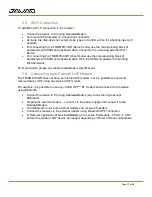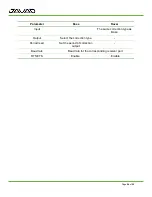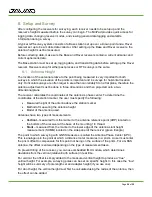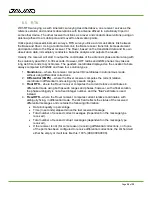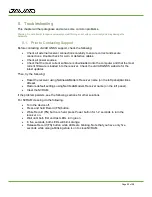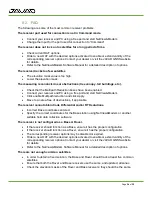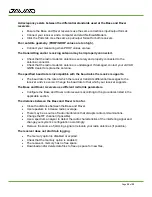
Page
29
of
35
6.4. Kinematic Survey
In a kinematic or a stop and go survey, the stationary receiver (Base station) is set up at a
known point such as a survey monument, or an unknown point. The receiver continually tracks
satellites and logs raw data into its memory. The Rover receiver is set up at an unknown point
and collects data in static mode for 2 to 10 minutes. When finished, assign the Rover to
kinematic status, and move to the next survey point. At this point, and each subsequent point,
the receiver is changed to static mode to collect data. So, while moving, the Rover is in
kinematic mode, and while collecting data, the Rover is in static mode.
•
Set up the Rover at an unknown point and press the Power button.
•
Allow the Rover to collect static data for two to ten minutes. The REC LED will be yellow.
•
Check the SAT light for satellites tracked.
•
When finished, press the Record (FN) button for less than 1 second to assign the Rover
to kinematic.
•
Move the Rover to the next location (survey point) and press the Record (FN) button for
less than a second to collect the data in static mode for two to ten minutes.
•
Repeat the two previous steps until all points have been surveyed. The occupation time
for the points depends on the same factors as for the static survey method.
When finished, press the Record (FN) button for one to five seconds to stop logging data. Turn
off the Rover if needed. This method of GNSS survey allows the operator to reduce the point
occupation time, thus permitting field crews to survey many more points compared to the other
methods available.



